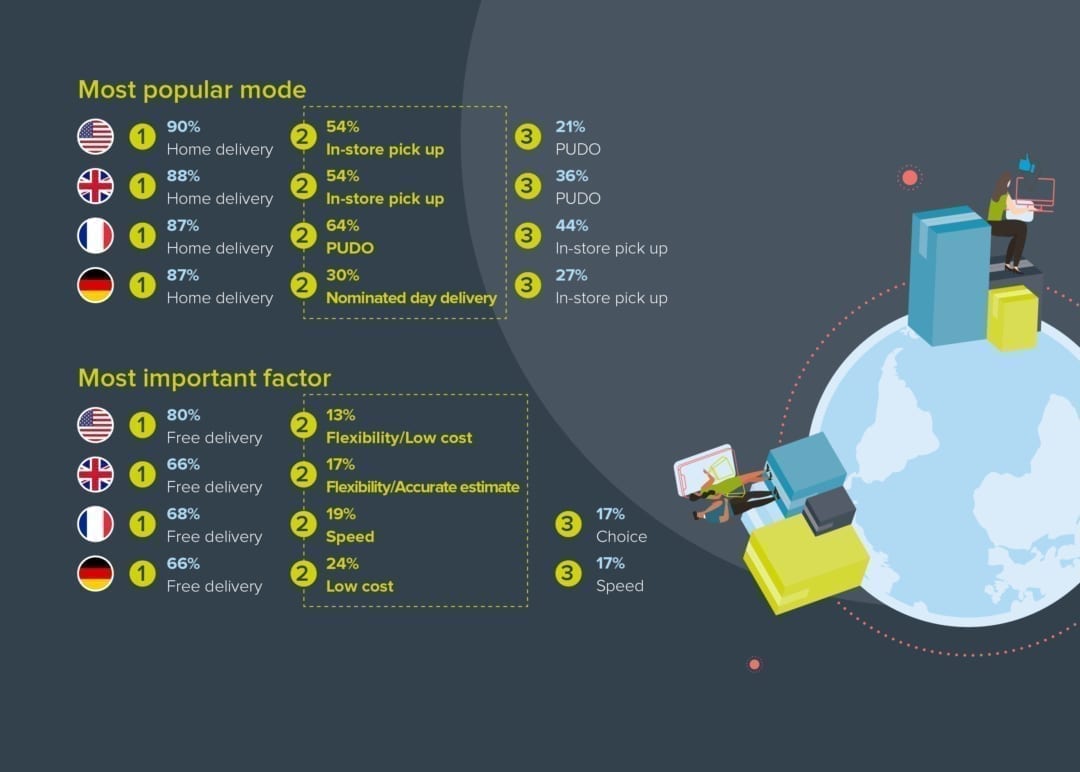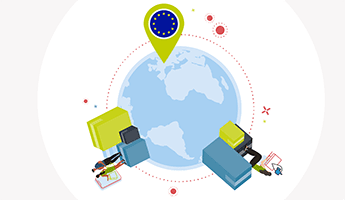
As the coronavirus pandemic ebbs and flows around the world, the effect on shoppers is just as variable. In the US, many states remain ravaged by the virus. Most consumers have taken refuge in online shopping, while many more besides have cut their spending altogether due to job insecurity or other economic concerns.
In Europe, online shopping has been a firmly established trend for some time now, and in the wake of the pandemic it’s reaching never-seen-before volumes. One benefit of the online shopping boom is that retailers have seen their reach become global overnight. There’s nothing stopping brands from capitalizing on overseas markets. Well, nothing apart from their own infrastructure.
International expansion is an exciting prospect, but all too often brands lack the operational setup and carrier ecosystems to serve these new markets – especially those that have de-prioritized digital. These are the steps retailers must take now to build the automation, intelligence, and partner ecosystems they need to fully capture this opportunity.
Tap into a global carrier network
Expanding your online offering overseas is enticing, especially in times when your home market isn’t reachable in the usual ways. Despite the allure, many brands have hesitated to expand internationally as this has typically involved setting up and managing bespoke carrier integrations all over the world – which is a costly and time-consuming endeavor.
The most successful brands have chosen to overcome this hurdle by partnering with a carrier integrator offering a library of delivery services all over the world. This allows them to automatically allocate the fastest and most cost-efficient route to serve international customers.
Adapt to serve new markets
Despite the allure of international markets, there are several factors that deter consumers from shopping with overseas brands. Our analysis shows that 46% of consumers are put off by international shipping, which they perceive as expensive, while 28% say slow delivery is a barrier.
What’s more, many retailers find that the delivery options that are most convenient for one geographical market aren’t necessarily the best fit for another. Home delivery is a popular way to receive parcels around the globe, but beyond this consistent first choice, opinion is divided. In the US and the UK, in-store pickup is the next most popular choice (54%), whereas in France it’s PUDO collection (64%) and in Germany nominated day delivery is the next favoured (30%).

Flex your fulfillment
Scaling your fulfillment operations across borders can quickly become a drain on resources – especially if your team is tasked with manually processing activities like carrier allocations or international shipping documentation.
Retailers with intelligent infrastructure can automate these processes to scale more efficiently as they expand into new markets. At the same time, these capabilities also allow brands to build personalization into the front-end to cater to different delivery preferences all over the world.
In the All-Delivery Era, retailers that want in on Europe’s online shopping boom must find a way to optimize the post-purchase experience despite the additional complications of international shipping. This also requires a sensitivity to local preferences, in order to deliver the convenient and personalized experience that shoppers crave.
Find out more about the All-Delivery Era, and how you achieve international expansion in these unprecedented times. Download the Metapack eCommerce Delivery Benchmark Report 2020.

